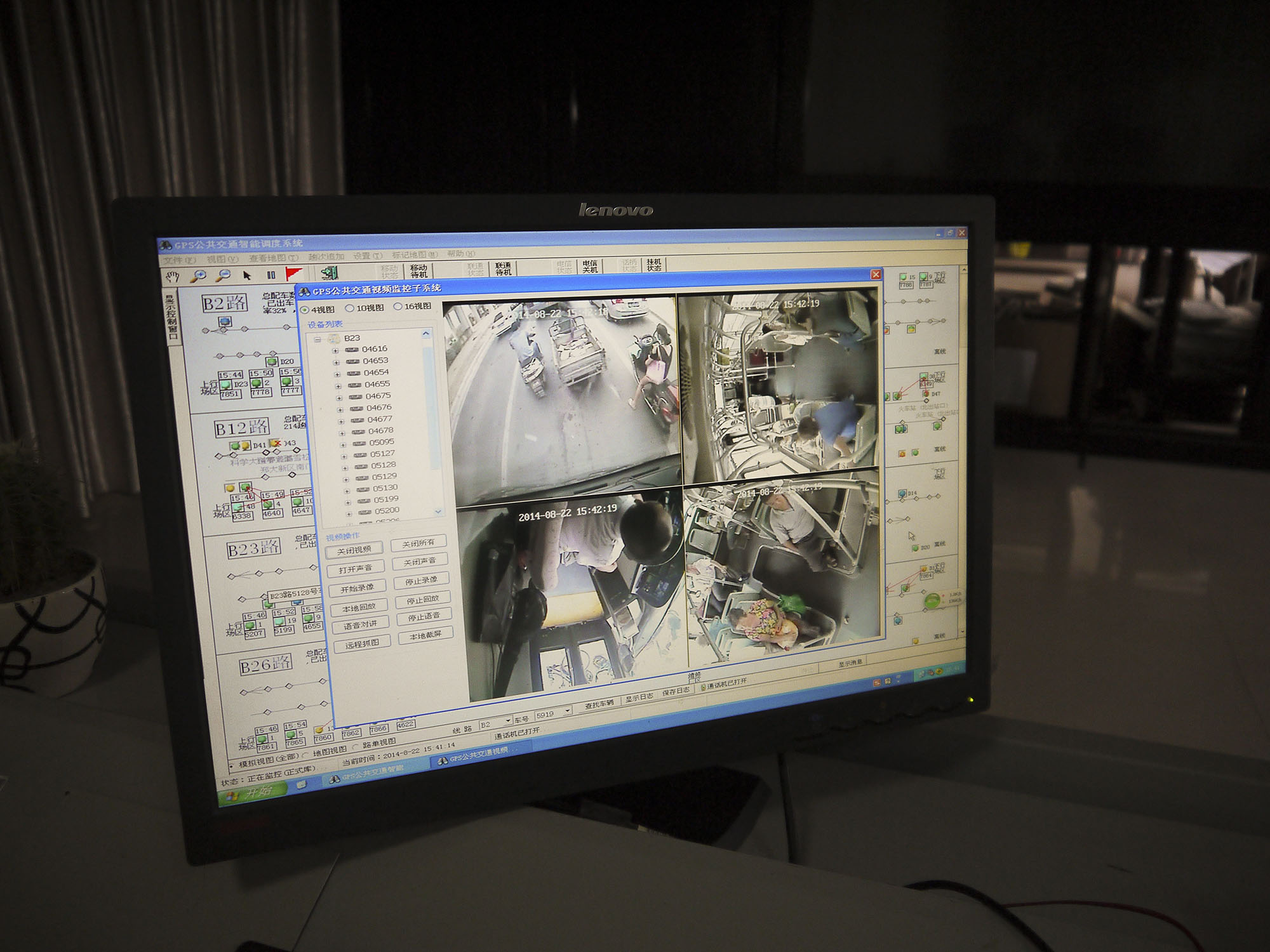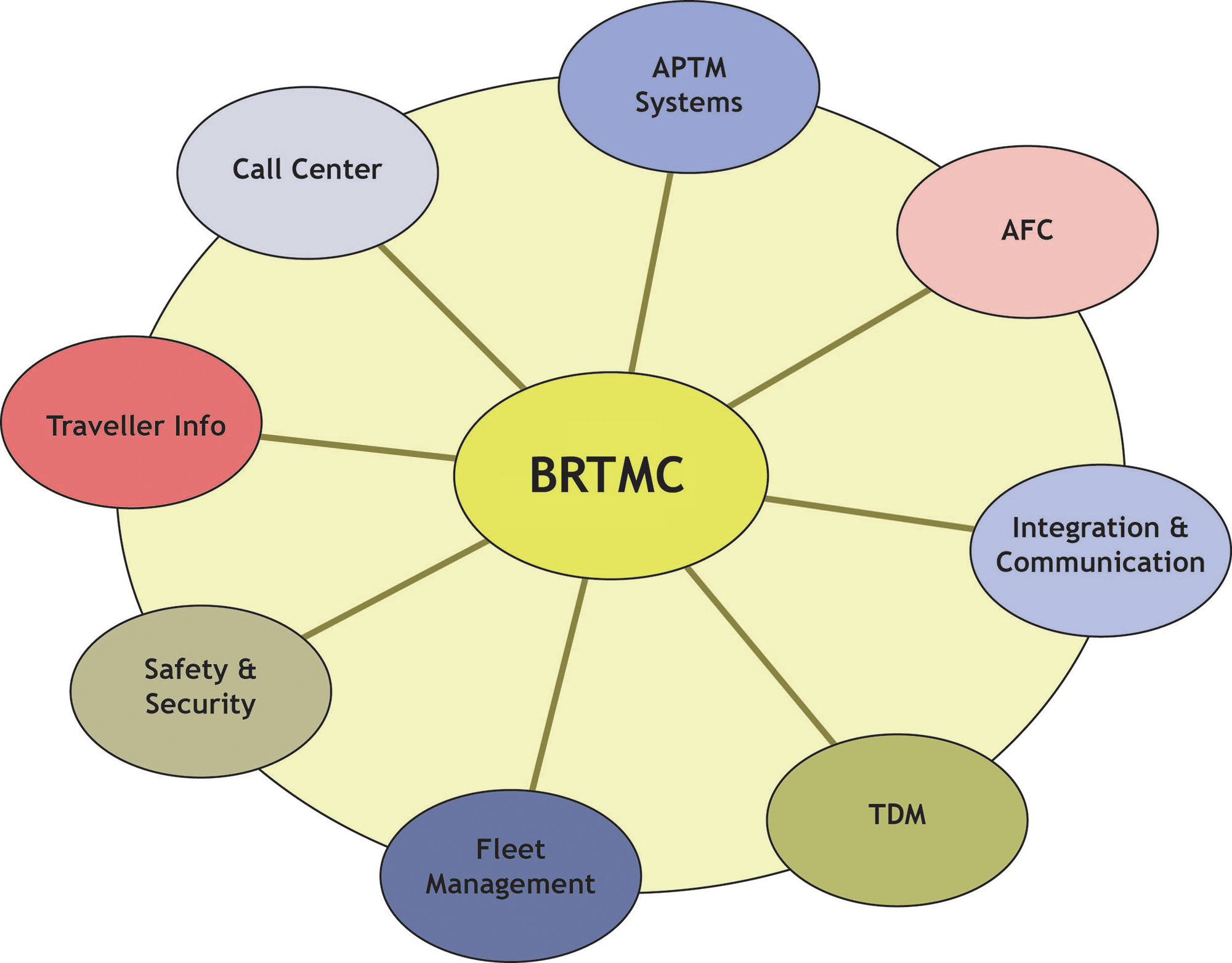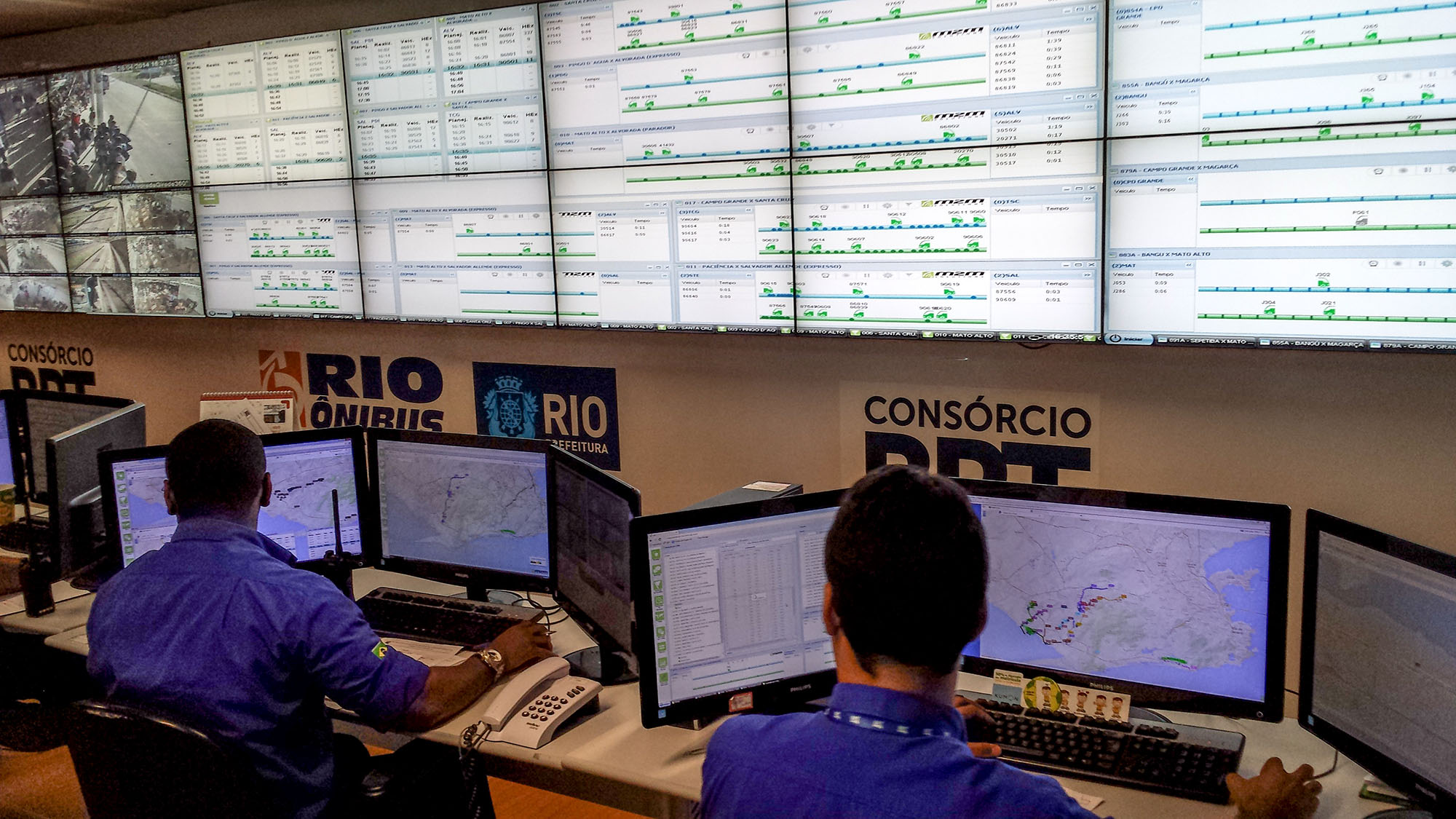27.2The BRTMC
We live in a society exquisitely dependent on science and technology, in which hardly anyone knows anything about science and technology.Carl Sagan, scientist and writer, 1934–1996
27.2.1Purpose

A BRT system typically uses global positioning systems, communication systems, CCTV (closed circuit television) surveillance systems, and other technologies that enable customers to obtain information about when a vehicle will arrive to know where a vehicle is along its route. The BRTMC is the point from where the total system is managed and controlled.
The aim of the BRTMC is to ensure optimal BRT operations, to facilitate improved safety and incident response, and to provide real-time information to commuters about BRT-related events. As in the case of the regional TMC, the BRTMC can also serve as the information hub for the public, police, traffic services, and roadside emergency personnel, while integrating the actions of various services to minimize response time.
27.2.2Functions
The BRTMC is expected to contain both real-time control and monitoring operations (in an operations room), as well as non-real-time operations like planning, scheduling, and administrative functions (which should be located in the BRTMC).
The typical functional elements of a BRTMC are as shown in Figure 27.5 and are discussed in more detail thereafter.

27.2.2.1Automated Fare Collection (AFC)
The AFC function in the BRTMC has two prime focus areas, namely:
- Ensuring accurate fare collection;
- Minimizing any occurrences of fare evasion.
The identification of system/equipment failures and monitoring for potential fare evasions are real-time operations. The identification of failures is, however, automated to some extent, while CCTV surveillance operators, drivers, and on-site staff are also expected to report equipment/system malfunctions and fare evasions.
Other personnel that are involved with the AFC system are the conductors who check for fare evasion in stations and on vehicles. While these persons may not need permanent accommodation, it might be advantageous to accommodate them in the BRTMC, the depot(s), or alternatively in a customer care facility and possibly in a shared area.
The apportionment of fees and the analysis of travel data might have to be performed according to the type of vehicle-operating contract. This task should be performed by a person in the BRTMC.
Other AFC-related functions are:
- Auditing;
- Reconciliation of fares;
- Stock management (fare media and consumables);
- Cash management (for kiosks, automated vending machines, and onboard cash boxes if applicable).
27.2.2.2Advanced Public Transport Management (APTM)
The following functions should be performed in either the BRTMC or the depot(s):
- Driver and Vehicle Scheduling (also known as “runcutting”). These persons can be accommodated at either the BRTMC or the depot(s);
- Fleet Management and Maintenance Controller. It is recommended to localize this to the vehicle operator’s depot(s);
- Schedule Adherence. This function consists of monitoring the progress of the vehicles on the routes and taking corrective action when a vehicle deviates from the schedule. This function should be accommodated in the BRTMC;
- Performance Management. This function typically falls within the administrative environment of the BRTMC and is implemented for the vehicle operating contract(s). It entails the monitoring of the processes of the operating contract(s), particularly for such processes that are reflected in Key Performance Indicators, to ensure that the required service levels are met and if not, to take the steps necessary to ensure that the service levels are adhered to. A Performance Manager, accommodated within the BRTMC, should be appointed for this task;
- APTM Systems Maintenance Manager. This function is responsible for ensuring that the required APTM systems’ availability is maintained. It would be advisable to appoint an APTMS Maintenance Manager to identify malfunctions as soon as possible and, in the case of a malfunction, be held responsible for logging the fault and ensuring that the problem is resolved within the required time frame. Vehicle operating contracts may use the same systems. This function should be housed within the BRTMC.
The above APTM tasks do not necessarily require one person per task, but they can be combined depending on the size of the BRT system.

27.2.2.3Traveler Information
This function is responsible for the following information systems that are controlled from a BRTMC:
- Pre-trip information systems, for example, providing schedule and route information;
- Personal information systems, for example, providing information via an SMS service, public Call Center, and website;
- In-vehicle information systems, for example, audio announcements via the Automatic Voice Annunciators (AVAs);
- In-station information systems, for example, BRT schedules, route information, and Variable Message Signs (VMSs).
27.2.2.4Transport Demand Management (TDM)
TDM entails BRT service coordination and transport planning, and it is recommended that is also be housed in the BRTMC. This function typically also acts as an interface to the regional TMC, where applicable, on issues such as traffic signal optimization and traffic control.
27.2.2.5Transport Safety and Security
Safety and security are crucial to the success of any BRT system. As such this function should focus on:
- Surveillance to ensure station, on board, and route safety and security;
- Vehicle safety systems;
- Incident/disaster management;
- Information and Communication Technology (ICT) systems’ security;
- Law enforcement.
It is recommended that this function be accommodated in the BRTMC.
27.2.2.6Fleet Management
The fleet management function is responsible for:
- Maintenance of management systems;
- Transportation operations systems;
- Utilization management systems;
- Fleet telemetry systems;
- Vehicle guidance.
It is suggested that this function could be housed in either the BRTMC or the vehicle operator’s depot(s), or both.
27.2.2.7Integration and Communication
Due to the diverse complex systems and different entities required to enable an effective and efficient BRT system, integration and communication play a cardinal role in its success. This function facilitates:
- Station integration and communications;
- Vehicle integration and communications;
- Roadside integration and communications;
- Back-office integration and communications;
- Regional TMC integration and communication where applicable.
It is recommended to accommodate this function in the BRTMC.
27.2.2.8Call Center
There are two main components in the call center function, namely:
- An internal component for BRT staff to obtain information or assistance and log issues. It is recommended to accommodate this component in the BRTMC;
- An externally focused component facilitating public interaction and interaction with the regional Transport Management Center. This function could be accommodated in the BRTMC or elsewhere as discussed below.
A regional TMC typically already hosts a Transport Information Center (TIC), which might operate a twenty-four-hour call center that provides public transport information to commuters. The TIC normally disseminates information to motorists and commuters by means of radio reports, variable message signs, semi-dynamic message signs, websites, and SMSs. As such, the regional TIC could be used for the BRT Call Center’s public interaction function if the required integration and communication infrastructure is in place or if the BRTMC is collocated in the regional TMC.